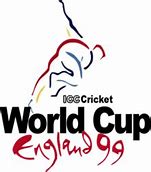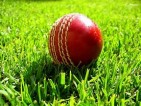A look back at Australia at the 1999 World Cup
Marco Trevisiol |
While Australia’s win at the 1999 World Cup is a remarkable triumph on its own terms, it’s even more of an achievement considering the tumult the side went through in the years leading up to the tournament.
Post-1996 World Cup, Australia went into a rapid decline, one of their worst in the history of the format. For example, Australia twice lost 5 ODI matches in a row in the space of a few months, unthinkable by the standards Australian cricket had set in the previous decade.
The situation turned into panic mode for Australian cricket in their home tri-series against Pakistan and the West Indies in the 1996/97 home summer. Even when they had been an ordinary side, Australia had always done well in this annual event; indeed the last time they’d missed the finals was in its inaugural 1979/80 version.
But after a couple of comfortable early wins against the West Indies, Australia imploded to lose five in a row and be out of the finals before their final qualifying match. They looked a stale and uninspired side, especially so when compared with the inventiveness and boldness of Pakistan (who would go on to win the tournament).
Inevitably the pressure went onto captain Mark Taylor and it shouldn’t have been a major surprise. Even in top form, he never was totally convincing as an ODI opener as he simply didn’t make enough runs and at too slow a rate; only his undoubted captaincy skills ensured there wasn’t scrutiny. But once Australia started losing constantly in the 1996/97 season he’d lost his justification for staying in the side.
Taylor’s ODI woes continued in 1997 and by the time of a whitewash ODI series loss in England with him scoring 17, 7 & 11 (all at sub-50 strike rates), his axing was inevitable.
Before the 1997/98 season Taylor was sacked as captain and replaced by Steve Waugh. But the other major selection change – and even more significant – was keeper Ian Healy being replaced by Adam Gilchrist as it led to a major change to how ODI cricket is played.
After a modest initial period of playing in the then traditional ODI keeper spot of 7, Gilchrist was moved up to opener in a tri-series final in South Africa and the rest is history. These days it’s unthinkable that any ODI side picks a keeper for their keeping first as they have to be viable as a batsman above all else.
As for Healy, he was an unlucky victim of timing. He had been a solid and reliable member of the ODI team for close to a decade; not just for his keeping but for regularly providing handy batting cameos at the end of innings. But his time as an ODI player was over.
Despite Taylor’s departure, Australia continued to face difficulties as Steve Waugh struggled to adapt to the role. During Australia’s 1997/98 home tri-series against South Africa & New Zealand, Waugh was dismissed for single figures six times in a row, leading to the possibility that he may himself he dropped. However he not only recovered form but Australia – after looking miles behind South Africa in the qualifiers – won the last two finals to pull off a memorable win.
But even with Australia’s overall ODI form improving, there were tensions in the 1998/99 summer when Steve Waugh missed most of the tri-series through injury. Shane Warne took over as captain and had immediate success, not only winning constantly but also impressing with his tactics, such as getting Australia’s pacemen to bounce out Sri Lanka’s batting lineup (who had just chased down over 300 against England) with great aggression and purpose. Many wondered whether Warne should be the full-time ODI captain.
But by the time the World Cup started, Steve Waugh was still in the role and had an imposing team behind him. The batting looked even stronger than the 1996 version with Gilchrist already one of the stars of ODI cricket as an opener – he already had Australia’s highest-ever ODI individual score record. Mark Waugh – Australia’s star player of the 1996 tournament – was still as reliable as ever and with Ricky Ponting and Darren Lehmann in the middle order, Australia had formidable firepower few could match. And with champion bowlers Warne and Glenn McGrath to count on, Australia looked one of the major favourites when the tournament started.
However, Australia’s first few matches were so poor that there existed the possibility they might not even last to the Super Six stage – and almost certainly Steve Waugh’s ODI captaincy reign would be over. A mediocre start against lowly Scotland was followed by losses to New Zealand and Pakistan as Australia had to deal with the likes of Gilchrist being out of form and also misguided tactics like using McGrath as a first-change bowler. And there were media reports that there was division within the Australian camp about the leadership of the side and that perhaps some preferred Warne’s leadership.
But from a difficult situation, Australia got only stronger and stronger the longer the tournament progressed. They ruthlessly dismantled the West Indies to guarantee their spot in the Super Six segment, and then had comfortable wins against India and New Zealand. However to qualify for the semis they had to beat a formidable South African team that looked the tournament’s clear favourites. And when Australia slumped to 3/48 chasing a substantial 271, their tournament looked over.
But Steve Waugh was to cement his captaincy credentials in more ways than one with probably his finest knock of an unbeaten 120 (albeit with the help of an infamous Herschelle Gibbs dropped catch), helping Australia win in the final over and set for a rematch against the same opponent in the semis.
What else can be said about the Australia v South Africa semi-final match that’s regarded by many as the finest ODI match ever? Certainly it could be argued that it showcased all the best aspects of ODI cricket in terms of defiant rearguard batting (S Waugh, Bevan, Kallis, Rhodes) aggressive brute force batting (Klusener), dazzling spin bowling (Warne) and superb pace bowling to the tail (Donald).
And of course it had the most remarkable finish to a ODI match that is still talked about today (it’s 20th anniversary is only weeks away) as South Africa lost their nerve when victory was there for the taking just as the West Indies did against the same opponent at the previous WC semi-final.
It wouldn’t be hyperbolic to say that this match was the starting point of Australia transitioning from a great side to an all-time great side. Under Steve Waugh, whom many doubted was the right man to lead the side in more ways than one, they found the person to take the side to new heights through his purpose and ruthlessness that set the stage for Australia to dominate the next decade of cricket.
After the Edgbaston semi-final, the final at Lord’s was an inevitable letdown. Not for Australia though who learnt the mental lessons from their 1996 finals performance by putting on a ruthless display against an overawed Pakistan lineup. Apart from Glenn McGrath dropping a sitter on the boundary, Australia were practically flawless in what is still the most one-sided WC final to date.





Leave a comment